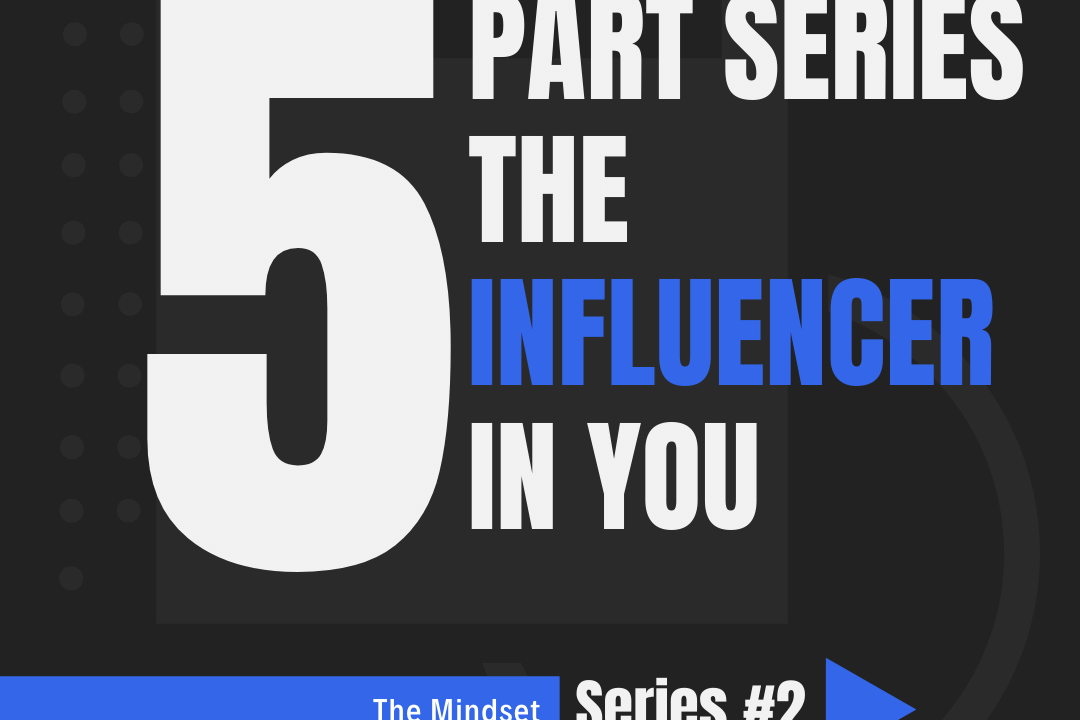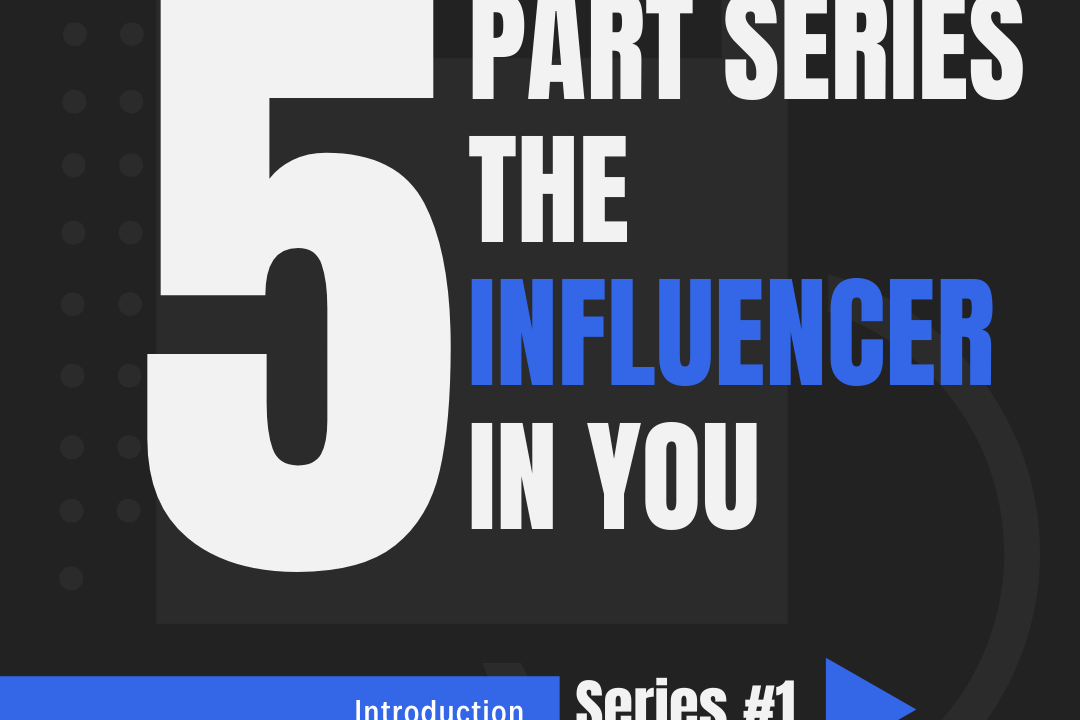The Influencer in You: Why Mentoring Works, How It Changes Lives, and Where It Transforms Legacies
Series #4: The Synergy

The Musical Chord of Mentorship Frequency
You’ve probably given little thought to the biochemical underpinnings that shape mentoring relationships. One thing is certain about great (or even good) ones: the synergy or harmony is so powerful, actually electrifying, when two or more people work together for a common cause. Enter the oxytocin zone. What is oxytocin? It’s a neuropeptide that plays a vital role in breastfeeding for nursing mothers and bonding for loving caregivers. It’s also what drives organizational success, whether it’s corporate America, a sports team, school district, household, or mentoring engagement. No connection, no collaboration. No collaboration, no cooperation. No cooperation, no (effective) communication. Just a lot of background noise that drives people apart instead of the symphony of bringing them together. Remember my emphasis of good, better, and best mentors in the second and third articles of this influence series? What’s good can be better, and what’s better has to be the best. Through culture, the best companies treat their colleagues, customers, and community partners like family. Through teamwork, the best sports teams are always on the same page, playbook, and pulse. Through excellence, the best school districts prioritize and harmonize this commitment to greatness 365 days a year in their interactions with staff, students, and stabilizers (or caregivers). Through love, the best households are sacrificial in their bonding, banding, and binding efforts with other family members. Remember the sitcom, The Partridge Family? Yes, I am dating myself. Through frequency, the best mentoring relationships leverage that special frequently — each manageable, memorable, and marketable engagement moment. And you can’t build mentoring momentum without it!
The frequency of connectivity is rooted in diversity, or the mentor’s ability to assist mentees personally, professionally, and philanthropically.
Let’s dig deeper into the neuroscience of rhythmic frequency, a misunderstood area of brain anatomy that spooks some people because of the terminology used to describe magnetic connections. Music and mentoring are both universal. And they feed off of that miraculous oxytocin spark that serves as the catalyst for a win-win relationship, well-respected leadership, or rock-solid partnership. Mentees resonate with mentors of trust. Employees resonate with trusted leaders. Spouses resonate with trustworthy life partners. In every case, the frequency or vibrancy of a harmonious connection is key. Speaking of being on key, Mark Lomax is a talented musician. He’s also a father, husband, composer, educator, lecturer, author, activist, thought leader, and philanthropy facilitator at The Columbus Foundation. His diverse skillset reminds me of Damon Wayan’s portrayal of a Jamaican man from the popular 1990s show, In Living Color. With a noticeable Caribbean accent, Wayan’s character in the skit would blurt out (to family members) when returning home from one job and quickly changing into another work uniform before exiting, “Hey mon, I’ve got ten jobs.” Like many actors and artists, Lomax has a unique take on things. He shared, “Mentors must strike an emotional chord with their mentees. Without it, their relational connection will be out of tune.” So true.

In our conversation on biochemistry, Lomax and I discussed the therapeutic benefits of mentorship and music, notably mood regulation. The best mentors are able to influence the mind of mentees through the mood of frequencies. Hype has a frequency. Hope has a frequency. Help has a frequency. Dial in to that station to move your mentee through each phase of the mentoring connection cycle. On the home-front. At the workplace. In the community. The first order of business for the mentor? Get the mentee fired up about a potential mentoring arrangement (or stay the course once it begins). This is the motivational or introductory phase where either side can back out. This stage can also be viewed as the recruitment pitch. Feelings often dominant in this phase, which is why expectations should, at some point, be highlighted prior to the official start of an engagement. Next up is the inspirational or projection phase. Here, the growth forecast is specified, values and beliefs are clarified, and personal brand statements solidified as choice muscles get exercised. Where a mentee aspires to go (in a life, legacy, or leadership pursuit) will largely depend on the visionary brilliance of the mentor to paint a compelling picture that keeps hope alive. Without hope, a mentee’s faith-led goal, driving ambition, or purposeful existence cannot survive, let alone thrive. The third phase is where tremendous growth gains occur through targeted, transformational improvements. This journey may take months, years, or decades to complete. It all depends on the investment. No ongoing payment, no lasting change. And the costs associated with change will likely exceed what each mentor and mentee have budgeted ahead of time.
Mentorship is music frequency. Hard to describe, easy to feel. The hard part is finding the right words to explain how the mentee and mentor were both impacted by their relationship. Of course, the easy part is recounting or reliving the experience in salient details. Yes, feelings fade over time, but a meaningful connection never does. Even when the engagement ends (and most mentoring relationships do at some point), those memories live on. Think about your favorite teacher in childhood or young adulthood. What do you remember about this educator’s most noteworthy talent, skill, or gift? How did this person motivate or inspire you? Why was this teacher, tutor, instructor, professor, or coach your favorite? Your reason(ing) and reaction are likely tied to oxytocin. What made learning so easy in that class? The ability to explain complicated subjects in simple terms to you and your classmates. Why wasn’t giving up an option? Those words of encouragement when you bombed a test. Where did that sense of resiliency come from? That game-winning touchdown when you’re number was surprisingly called to carry the football against a high school rival. What made a small or significant difference in who you are today? The teacher, professor, coach, caregiver, or boss who believed in you, even when your self-confidence missed the mark. Thank oxytocin for that special push, pull, or propel across the success finish line. In fact, you can’t bond, trust, or love anyone or anything without this neuropeptide in ample supply. It allows us to connect with and protect others (or hate that team up north and their obnoxious fans). One last point: Oxytocin even plays a pivotal role in our self-preservation instincts. Have you or someone ever said, “I trust no one but myself”?

Before closing out this article, I want to give a special shout-out once again to three of my mentors, Donna James, Clark Kellogg, and Steven Davis. Consulting expert and board member of several Fortune 500 companies, James’ voice of comfort as a distinguished woman of color has had a huge impact in how I present myself in corporate settings. She once shared with me, “The hard parts of diversity continue to divide us. But separation can turn into cooperation when we correctly respond to gender, racial, and religious differences.” Right on point. Kellogg, a former Ohio State basketball player and NBA star, and current CBS sports analyst, has been a relatable, reliable, and reputable mentor of mine for nearly 20 years. At our 2023 nonprofit fundraising luncheon, he pulled me aside for a Special K download. He said, “What you are doing in the lives of these young men will change the trajectory of their offspring — forever. Keep giving assists to our black and brown males, Fundy!” Say no more. Davis, former CEO of Bob Evans, will always have a cherished place in my heart. I’ll never forget his timely wisdom on adding value in the marketplace shortly before his passing. He highlighted, “The lack of colorism is an unfortunate problem at the C-Suite level in corporate America, but green settles the score. And when a POC helps a company make a lot of money, skin tone becomes less of an issue but more of a hiring priority.” Amen and rest in peace my brother. Trust. Trusted. Trustworthy. Without these qualities, the frequency of any mentoring connection gets lost in translation.
Questions to Consider:

How do you build trust as a relatable, reliable, and reputable mentor? Be descriptive.
What areas of bonding, trusting, and loving others do you need to replicate or reciprocate? Be honest.
Which aspect(s) of the mentoring connection cycle do you find the easiest and hardest to facilitate, the hype, the hope, or the help? Why?






